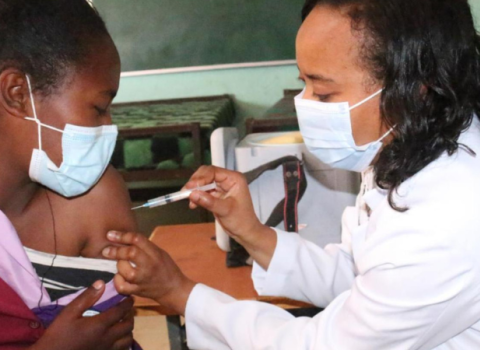
The role model for venture philanthropy is the venture capital industry. But rather than cashing out, charities and foundations are looking for precise ‘social returns’ on their investment, while for medical charities, and particularly those representing orphan diseases, the drive is to see new drugs and treatments.
One of the spheres where venture philanthropy is currently having the most influence is in biotechnology. On one hand research charities appreciate biotechnology holds the key to treating many diseases, especially the rare ones that could not command the attention of pharmaceutical companies. On the other, biotechs are coming to see that charities can be more amenable partners than venture capitalists, and that working with them provides more resources than straight cash, such as access to subject experts and patients.
But given the different objectives of each party, there remain many issues around how venture philanthropy deals are structured, how alliances are managed, who pays for what and who gets what rights.
As with venture capital, the home of venture philanthropy is the US. The organisation that is credited as being the prime mover in re-writing the rules for charitable funding of medical research is the Cystic Fibrosis Foundation (CFF). Speaking at the BIO meeting in Boston last week, CFF President Robert Beall described how in 1997 the foundation began a systematic effort to build a pipeline of drugs for treating the inherited disease.
“The gene was discovered in 1989: we knew what was going wrong, the problem was how to get companies involved in cystic fibrosis, given the small patient group,” said Beall. There are 30,000 people with cystic fibrosis in the US and a further 70,000 in developed countries elsewhere.
The biggest-selling cystic fibrosis therapy currently is Pulmozyme, launched by Genentech in 1994, which has sales of $250 million a year.
Keep the risk down
“You must minimise the risk of companies getting involved,” said Beall. Although CFF has been funding research since the 1950s, Beall said the first agreement to merit the venture philanthropy label was with Vertex Pharmaceuticals. In 1997 CFF gave the company $20 million to set up a high throughput screening programme with the objective of finding an oral drug to treat the root cause of the disease. Arising from this, one compound is in Phase II trails currently and a second is entering clinical trials this month.
In another example, CFF was approached by biotech company Altus Pharmaceuticals, which has a platform technology for the oral delivery of proteins. After providing $1 million for a proof of concept study, CFF subsequently gave Altus $25 million. This has translated into a therapy for replacing missing pancreatic enzymes, a complication suffered by a subset of patients, that will enter Phase III trials later this year.
“You must establish a business relationship with [corporate] partners,” said Beall. This involves agreeing to fund on a matching basis, setting out formal milestones as in any development agreement and setting up a scientific advisory board to guide the programme.
One significant difference between CFF’s venture philanthropy deals and their commercial equivalent is that the biotech partner owns the intellectual property. If a drug makes it to market, the foundation gets a royalty (and has the satisfaction that a new treatment is available). If a company decides not to take a programme forward, CFF can get the rights back.
CFF has invested $338 million in the past ten years and as a result there are 29 compounds in development. It is currently looking to raise a further $175 million up to 2010 to spend on research, and Beall said having a business model for disbursing funding attracts people to make donations.
“You have to have significant funding to get involved in this. We have to get into the queue to bring biotech to the cystic fibrosis effort,” said Beall.
Surrender your rights
One of the keys to attracting biotech partners is giving up all IP rights. “Venture capitalists wouldn't accept this,” said Beall. “But we can't walk away from a deal. We need drugs.”
While CFF put in $20 million into the screening programme at Vertex in 2004, it has been very good in understanding the constraints the company faced in progressing the resulting compounds into the clinic, said Philippe Tinmouth, senior director of Vertex.
“The net present value of the project was relatively low, there was potential for competition for resources and our costs were not capped," said Tinmouth.
The value of doing a deal with CFF was evident for Altus, according to Bob Gallotto, Vice President of Strategic Planning and Alliance Management at Altus. Soon after the company’s formation in 2000 it received $1 million from CFF. This was the means to demonstrate proof of principle for the company’s oral protein delivery technology in administering pancreatic enzymes, and thus providing proof of concept for the technology platform as a whole.
Building on this CFF gave Altus $25 million in milestone-based grants for the development of ALTU-135 for treating pancreatic insufficiency in cystic fibrosis. “While the CFF money is non dilutive, Altus also retains all rights to the product, enabling us to build more value than if we had gone the traditional venture capital route,” said Gallotto.
“Small biotech needs money, but that is only part of the problem,” said Gallotto. “CFF gave us access to intellectual capital through working with groups that have a unique perspective on the disease.” In addition, was possible to accelerate development because the relationship with CFF makes it easier to recruit patients.
“Venture philanthropy money allows you to de-risk clinical programs,” said Gallotto. “CFF complements traditional investors as each has different mind sets and capabilities.”
One company systematically tapping venture philanthropy as funding source is CombinatoRx Inc, which is developing combination drugs based on marketed products that have novel mechanisms of action. “Venture philanthropy has played a very big role for us,” said Dan Grau, Senior Vice President of Commercial Operations.
In a discovery deal with CFF the charity gave $13.8 million to cover all expenses up to Phase I, with CombinatoRx owning all IP and commercial rights. Between Phase I and Phase IIa CFF meets 75 percent of the costs and makes milestone payments, while CombinatoRx pays 100 percent of costs beyond this point. “You wouldn't get this kind of a deal from pharma,” said Grau.
Engaging with research charities was not a choice for PTC Therapeutics – the question was which one to pick. The company's lead product PTC-124 blocks the action of nonsense mutations that arrest protein expression, resulting in a truncated, and therefore inactive, protein. This is the root cause of many inherited diseases.
“There are 1,800 potential indications, and at the time we have no clinical tools,” said Claudia Hirawat, Senior Vice President of Corporate Development at PTC. “We went to CFF to find out how this might work in cystic fibrosis.” PTC-124 is now in clinical development in cystic fibrosis and Duchene’s muscular dystrophy, and there are 20 other programs in the portfolio.
Patient groups continually approach PTC to apply its technology to their diseases. “This is placing a responsibility on PTC,” said Hirawat. “CFF is used to working with biotechs, but many other [charities] are not. You need to understand the expectations of patients’ groups.”





 A unique international forum for public research organisations and companies to connect their external engagement with strategic interests around their R&D system.
A unique international forum for public research organisations and companies to connect their external engagement with strategic interests around their R&D system.